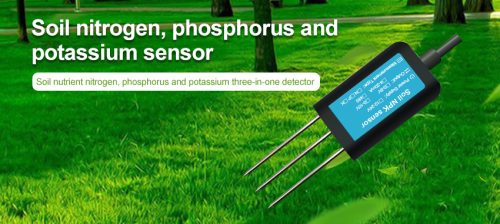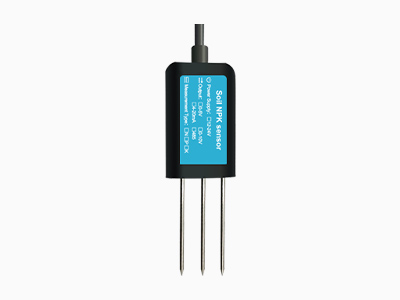Soil NPK Sensor
The soil NPK sensor is suitable for detecting the content of nitrogen, phosphorus, and potassium in the soil, and judging the fertility of the soil by detecting the content of N, P, and K in the soil. The stainless steel probe of the soil npk sensor can be buried in the soil for a long time and is resistant to long-term electrolysis, salt, and alkali corrosion. The shell is vacuum potted and completely waterproof.

About soil npk sensor
1. Simple to use, few operation steps, fast measurement, no reagents, unlimited detection times.
2. High measurement accuracy, fast response speed, and good interchangeability.
3. The electrode is made of specially treated alloy material, which can withstand strong external impact and is not easy to damage.
4. Completely sealed, resistant to acid and alkali corrosion, and can be buried in soil for long-term dynamic testing.
5. The probe plug-in design ensures accurate measurement and reliable performance.
Soil npk sensor parameters

Determination parameters: nitrogen, phosphorus and potassium
Power supply: lithium battery
Display: Three rows 105*55cm
Storage: 200,000 sets
Size: 125 * 65 * 45 mm
Suitable place: Suitable for agricultural planting, pot planting, soil cultivation, soil analysis and so on
Power supply: 12V DC, 2500MA.h (standard)
Display mode: 2.8 inch liquid crystal display
Communication mode: USB (read, see DB9 interface description for details)
Data storage: 4MB storage (standard configuration)
Operating temperature: -20℃~50℃
Operating humidity: 0~90% (relative humidity), no condensation
Communication protocol: Modbus serial communication protocol
How to use Portable NPK soil tester:

1. Quick test method
To measure the position, avoid rocks and ensure that the steel needle does not touch hard objects. Discard the top soil at the required measurement depth, keeping the original tightness of the soil below, and insert the sensor vertically into the soil. Don’t rock from side to side. It is recommended to measure the average multiple times in a small area of a measurement point.
2, buried measurement method
Dig a pit with a diameter >20cm vertically, insert the induction needle horizontally into the pit wall to a predetermined depth, and fill the pit tightly. After a period of stabilization, measurements and recordings can be made for days, months, or even longer.
